An Escapade in the Ardennes: Parallels between Ultra Hiking and Business Building #15
A journey through my 39-hour 160km ultra hike, what we can learn from it and what it has to do with a T-Rex, a Pool boy and bum chafing.
***
This is a long read. I recorded an audio version of the post in case you are on the go. Happy reading/listening!
***
I noticed people clapping from a distance and heard cheering at 6 pm on a Friday afternoon. I was preparing for "The Great Escape", a 160km ultra-hike in the Ardennes. While getting ready after a quick nap in the back of my car, I heard the applause from the race headquarters nearby and wondered why.
Wasn't the shuttle bus to the starting line in Luxembourg scheduled for 6:30 p.m.? I rechecked the schedule on my phone and realized with shock that the shuttle was supposed to leave at 6 p.m. In a moment of panic, I had to choose between giving in to despair or quickly gathering my gear and sprinting to catch the shuttle, hoping it was still there. I opted for the latter.
What is The Great Escape?
According to the organisers, “The Great Escape Race is a non-stop mountain marathon and must be considered a serious undertaking. You can complete it as a runner or a hiker, either over the total distance of 160km (100 miles) or 80km (50 miles) through the best that the Ardennes have to offer.
On both sides of the Belgo-Luxembourg border, in the midst of the central Ardennes, you will discover 160 km of trails leading you from small discrete discoveries to vast views!
You must be in good enough physical condition to complete the race within the allotted time and possess the necessary skills to navigate effectively and manage emergency situations in mountainous terrain.”
The time limit to complete the race course is the following:
The Great Escape 160km Run in 36 hours
The Great Escape 160km Walk in 44 hours
The Great Escape 80km Run in 16 hours
The Great Escape 80km Walk in 22 hours

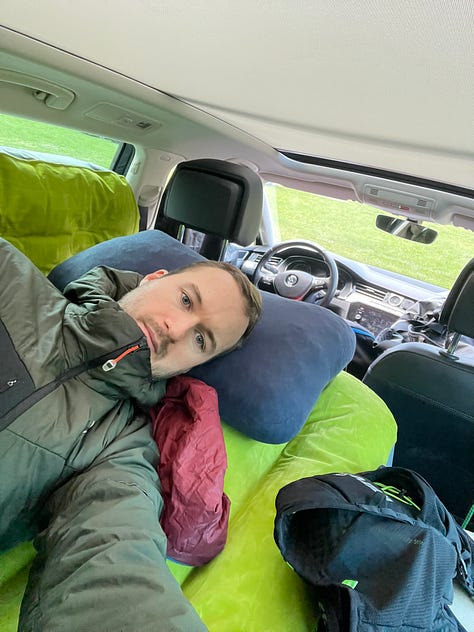
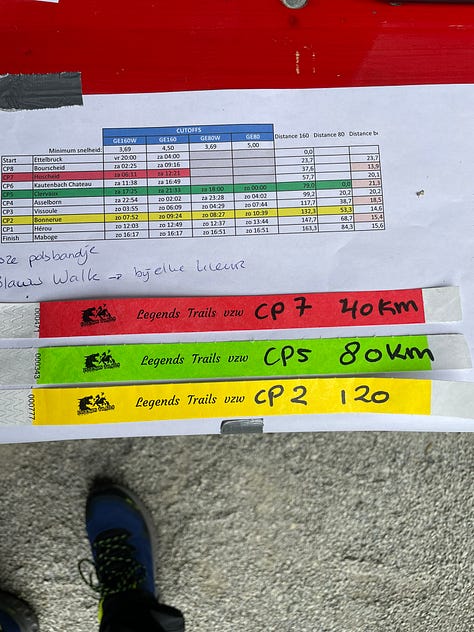
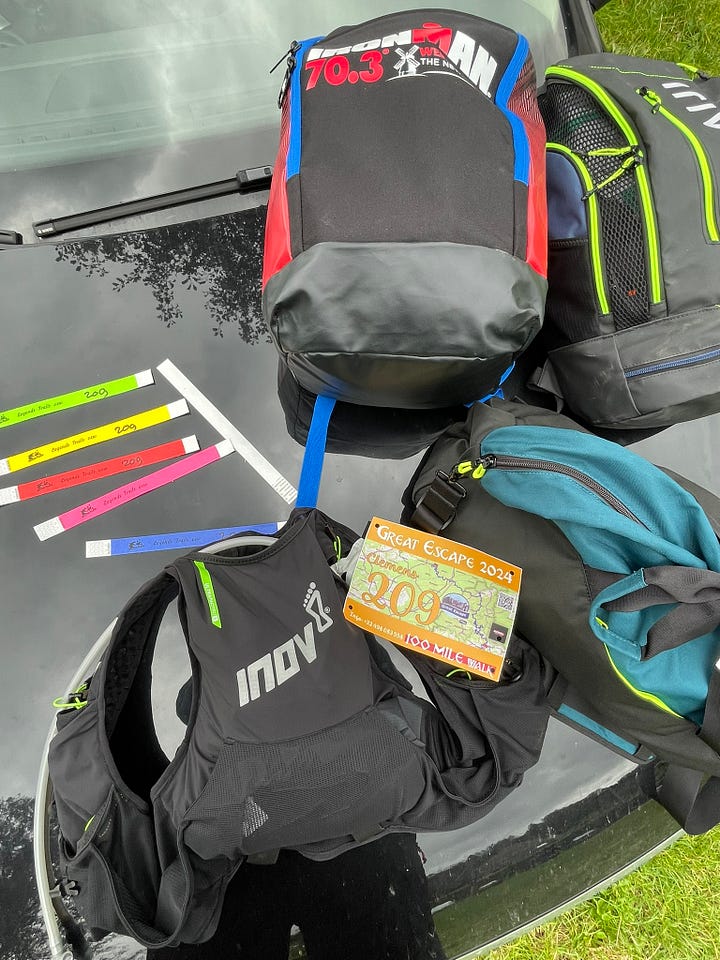

Ultra hikes require detailed logistical preparation since they are self-supported. You are not supposed to rush before the start but in this case, I had to ditch this principle and quickly packed my gear into another bag before running to the bus.
Some runners, who would start a bit later than the hikers, grasped my situation and cheered me on. A volunteer from the organization team ran with me to catch the bus, which fortunately was still there. Taking the walk of shame to the back of the bus, I explained to everyone that I had confused the starting times, earning both disbelieving looks and smiles as this was an uncommon occurrence before a 160km ultra hike.
The journey to the starting point in Ettelbruck, Luxembourg, took around 1 1/2 hours, during which I tried to calm down and prepare myself. While most of my fellow hikers were in their zone, mentally preparing for the challenge ahead, I was the only one breaking the silence by arranging my gear.
I started by taping my toes and feet to prevent blisters, a common issue during such long hikes. Then, I packed my hiking vest, which I was using for the first time. It fits nicely around the upper body and causes less back strain compared to a backpack during long hours on the trails. The curvy drive through the Ardennes caused some of my gear to fall on the bus floor, making it a struggle to retrieve it at times.
My seat neighbour looked at me with a mix of confusion and pity.
I knew that the most challenging part of the preparations was still to come. Having learned from past ultra hikes, I knew the importance of applying anti-chafing cream in and around my bum to prevent chafing. Most experienced ultra-endurance athletes do this to avoid bum crack chafing. This is one of the painful consequences of ultra distances, and the discomfort can linger for days after the race and can be especially painful during showers.
Naturally, I did not want to apply anti-chafing cream on my behind in front of others. So, as we were getting closer to the starting location and the bus arrived, I let everyone disembark before me. I knew that the bus would go straight back to where it came from, giving me only a couple of moments to apply my cream discretely.
I did not want to be confronted by the bus driver about what I was doing alone at the back of his bus with my hands in my ass. This may be more information than you bargained for, but it shows how serious the consequences are if you are unprepared. In my case, the lesson learned was to remember and double-check the race day schedule.
In the end, I managed to apply the cream properly, and I was ready to get going. At 8 p.m., with the last twilight, the countdown started, "3, 2, 1, go." There were no shiny lights, no loud music, and no spectators, just 25 hikers focused on the task ahead.
As always, during the first couple of kilometres, the field stayed close together until participants start to find their own rhythm and pace. Small talk takes place, and race strategies are shared while we follow the beams of our headlamps. I met Klaas, a 19-year-old Dutchman. He told me his dad was going to start as a 160km runner the following day, and I found the thought of a family meeting on the trail and sharing such an adventure fascinating.
We enjoyed the conversation so much that already after 4 kilometres, we got lost and took a wrong turn, ending up at the very end of all the hikers.
It did not bother us since we both shared the same mindset about embarking on an adventure in which ego had not role to play.
It was nice to catch up with other hikers along the way and hear their stories. Like a group of three Dutch hikers, we called them “The Flying Dutchman”, who had gifted one of their friends the ticket to this ultra hike for his birthday. What a present. The only “problem” was that his longest hike up until then had been around 30km. Even though I believe that the mind can carry one a long way, some sort of previous experience is certainly helpful. Later, I learned that, unfortunately, "The Flying Dutchman" dropped out in the first quater of the race.
We also met "Tall and Small", a group of two determined gentlemen who were much faster than us but frequently took wrong turns, so we met them repeatedly. They were not very talkative and there was some irony in the fact that they frequently overtook us but still managed to end up behind us more often than not.
Spending 40 hours on the trails may seem long to some. People often ask, "Don't you get bored?" No, I actually do not. There is always something to do or think about while being out there on the trails. Compared to a very long flight or car drive, it may seem daunting at certain points, but there is always something to keep one busy, especially on this hike through the Ardennes. The trail was very technical and required a lot of focus and concentration.
The brain must constantly assess what to do next, where to take the next step and minimize the risk of accidents. Do you know the feeling when you need to get something done in order to do something that you can only do once the first thing is done? It is similar in a 160km hike.
From experience, I knew that I needed to complete the first 100km before being ready to tackle the last 60km.
It may seem logical, but for me it is an essential part of the process. I do not allow myself too many distractions in this first part of the race. I give my body and mind the time they need to adapt to the distance and the circumstances. When my mind presented me with the question why I was doing this during the first 80km, I shot that thought down by answering that we needed to get the first 100 km done, and only then was my mind allowed to ask this question again.
I also continued to visualize the moment of crossing the finish line, less because of the medal, which is a nice memory for that day, but more to stay focused. It is about the manner of traveling, the experiences along the way and not the destination I will arrive at. I hike those distances to find my limit and to see what is possible, physically and mentally, and because it helps me to become the version of myself I aspire to be.
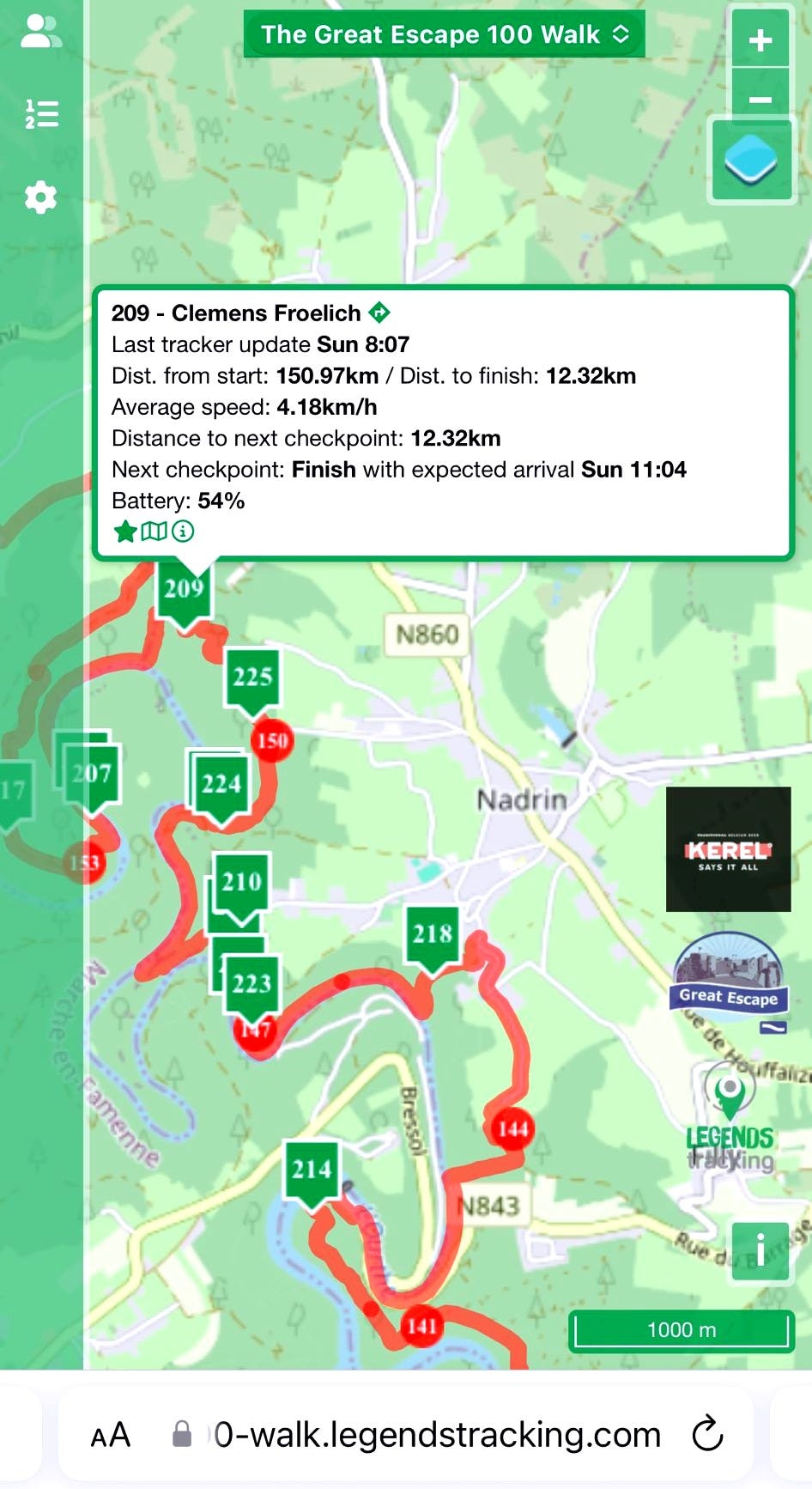
To put words I like so much into action: perseverance, persistence, resilience, courage, connection. Ultra-endurance events are one way for me to deliberately exit my comfort zone and be fully present in a zone that is hard to describe.
A zone where at times nothing happens and where at times ultimate growth happens.
I would also be happy if I could find those zones with fewer kilometres or on my couch, but so far, I have not been able to find them there.
Besides the trail vest, I experimented with another new gadget on the trails: hiking poles. They are lightweight and help with ascending, descending, and on the flats, increasing speed and balance and helping to stay upright to reduce the risk of back pain. It was a pleasant experience to use them, and I asked myself why I had not started using poles in earlier events already until the moment when I almost tripped over them and also saw the risk of using them. So I guess it comes down to practice.
The first night was fun. I walked parts of it with Klaas, but we parted ways at the first checkpoint. He stayed a bit longer, but I knew I wanted to spend less time at the first checkpoints to get ahead of the cut-off time as much as I could since one never knows what happens on the trails. While descending from the checkpoint into the dark woods, I found a "Xylophone" in the fields. The inner child in me became super excited, and I took a moment to share my musical talent with the dark night. Surprisingly, no applause. I wonder how many athletes took the time to perform for the wonderful audience of cornfields.
I continued to stroll along the trails, climbing the steep and slippery ascents that make up the Ardennes, alternating with smooth or tricky descents. I was following the beam of my headlamp, the rhythm of my breath, and my thoughts were circling around the mysterious calls of the night owls “huh huuuu”.
Suddenly, I stopped in front of a mighty wall. Looking up, it became clear what it was: an old chapel. Despite not being too religious, I have a deep respect for religious places - especially ones I come across in the middle of the night in the dark woods. I looked around the corner, but I could not find the trail until it became evident that I had taken a wrong turn just a couple of meters back.
Was there a deeper meaning to this? Something the universe wanted to tell me? Is there someone inside? Shall I knock? Am I suppossed to donate some money? Is someone watching me? These are all questions I would not ask myself during the day, but at nighttime, alone in the dark forests, the mind somehow functions differently.
The trail lead to mystic places. The moisture was hanging close to the ground, and the headlamp only helped me see so far because of the mist in the beam. An atmosphere that makes you wonder what else is out there. The infamous Ardenne monster? A troll? Or just the usual deer, salamander, and frogs.
With the first sunrays of the new day on Saturday, the cold crept slowly away. It was a nasty cold getting under our skin, together with a light drizzle, wet ground, and grass. Shoes were constantly wet or very wet, which increased the risk for blisters.
It was pure coincidence that I ended up on top of one of the many hills during early sunrise. The horizon filled with orange, yellow, red, and blue colours. I snapped some pictures and told myself this is what made it all worth it. How much better can it get than watching a sunrise alone in the Ardennes? Oh boy, I had no idea what was waiting for me…
I continued along the top of the hill and climbed an observation tower to have an even better view of the sunrise. What a moment. The perfect word to describe the scene was tranquillity. An unobstructed 360-degree view with a sunrise like in a romantic movie, just some birds singing. Until the moment I heard some steps and a voice mumbling in the distance. I knew it must be another hiker closing in while I was enjoying the views. I decided to wait the hiker out from the top of the tower.
Who might it be? Tall and Small? The Flying Dutchman sailing through the sunrise? It was Klaas catching up again. We were happy to see each other and decided to press on together. We exchanged stories of how the night went for both of us and what damage our bodies had already taken.
Klaas mentioned a huge blister taking up his mental space and giving him quite some pain. He looked forward to his new pair of shoes at the next Checkpoint. I shared that I had a slight knee pain creeping in. I knew this kind of pain. It is not a good one. It comes from my left leg being almost 1cm shorter than the other one, resulting in a constant overstretching of the knee. It would normally not have been a problem - if I had worn my orthopaedic insoles.
I needed to give up a 100km hike in Germany some years ago because of the same problem and pain. It is a pain that becomes unbearable at some point, not allowing me to bend the knee anymore. It was a stupid mistake for me not to bring those insoles. On the one hand, it was because I started in a rush with the wrong timing in mind, and on the other hand, I deliberately decided not to bring them as I had no issues with this pain in my daily life.
Well, daily life and hiking 160km are pretty different situations. I told myself it would be fine.
The fog was hanging in the valleys. Sometimes, we were below the fog and fighting the cold, and then we climbed up the hills again and enjoyed the views of the fog hanging in the valleys. We heard church bells tolling in the far distance, trying to assess from which direction they were coming. Or was it maybe even the same chapel I saw in the woods at night?
We talked, we were silent, we observed. Meeting someone on the trails is also called a “trail alliance”. Teaming up and pressing through difficult moments or sharing the beautiful moments. We were approaching the next Checkpoint. Klaas had difficulties with his blister pain over the last climb, so we agreed that I would go ahead at my own pace and we would reunite at the Checkpoint. Closing in on the Checkpoint, the lovely volunteers were raising the spirits by writing words such as “pasta”, “coke” (the drink), or “candies” on the trail. It was a nice little touch to announce the comforts waiting at the Checkpoint.
I arrived at the Checkpoints before the large crowds because I am a hiker, and runners start their race later. Volunteers are always excited to see the first participants dropping in the CPs, so we received VIP treatment. At one Checkpoint, I met Hans, a familiar face from other Legends events. He was also taking care of a Checkpoint later in the race and enjoyed hiking there. A true Legend!
Time at Checkpoints is a mix of relaxation and working through my to-do list.
At the big Checkpoints, every participant can deposit "dropbags" with personal items, fresh clothes, shoes, and any other gear to recharge for the next stage of the trail. I always assess my feet first, and this time they looked pretty good. I tried a new way of taping my toes and heels, which worked like magic. I decided not to change anything about my foot setup.
However, I started to feel something else - chafing. I had hoped the anti-chafing cream would prevent it, but I anticipated it would become worse and something I would have to live with for the next 1 1/2 days. Acceptance is part of the process and always helps me progress over those distances, focusing my energy on where it is needed the most and where it can make a difference. And it makes me appreciate the chafing-free times even more in my daily life.
I packed up and was on my way again. Klaas stayed behind as his mum visited him at the Checkpoint, and they spent some time over a coffee together. I hoped he would get going on time so as not to flirt with the cut-off time too much. There was still a lot of ground to cover, but on the other hand, he was young and had a lot of energy in his tank.
The following 50km were essential for me. Not only did they mark the distance to the next dropbag, but they also determined whether I was at risk of not making the cut-off time of 44 hours. If you are too slow, you are disqualified and can only continue at your own risk without any safety teams or checkpoints along the way. Also, I knew that the second night was approaching and I wanted to cover as many kilometres as possible during daylight.
I made good progress, but I also felt the knee pain intensifying. It kept me busy for many hours, as I considered different scenarios for managing the pain. I knew it was not a pain with long-term health risks, and as soon as I would wear my orthopaedic insoles again, the pain would fade.
However, it is a pain that shook me to the bones.
I was willing to tolerate it for quite a long time. Knowing there were no long-term implications, I drew a parallel to building my business. There were many moments in the past months when I flirted with the thought of giving up and going back into a comfortable corporate career, but I decided to persevere.
Here I was, out on the trails with that pain trying to bog me down. Giving up was the easiest option, but I decided it will be the very last option. The other problem was: it slowed me down massively. I could barely go downhill anymore, and bending my knee always resulted in a shiver-inducing pain.
Sometimes I even needed to moan to let the pain out. Often when hiking through the night, I am afraid of what may be waiting out there to get me. But in this situation, I was more concerned about what others might think, seeing and hearing a limping guy out there in the dark forests moaning his way forward.
It reminded me that at this stage of a race, most participants have some problems they are dealing with. My thought was confirmed when I entered a smaller checkpoint at around km 117- it felt like crashing a funeral.
It was a mix of hikers and the front field of the runners who were catching up with us by this time, licking their wounds (metaphorically speaking) and wrestling with their inner voices on the best way to continue. Yet, it is at these moments where the race really starts. Remember when I tried to explain that the first 100km are only there to get to the second half of the race? Here we were.
Tiredness and fatigue start to kick in by that time and everyone has their own methods and ways to cope with it. Self-talk and inner debate are normal at this point, and it is often nice to observe when people dig deep to have those conversations, including myself. It is the competing voices like "Clemens, it is better you call the safety number and pull out of the race. Imagine the sleep you will get and a nice dinner" versus the voice which says "Clemens, you came this far and this is exactly what you wanted. You were looking for hardship to explore places in your mind you can not find anywhere else. Here you have it. Embrace and enjoy the suck."
If you could listen to my self-talk during those races, you would think I am totally crazy. Most of us have these competing voices, and according to performance expert Steve Magness (I wholeheartedly recommend his books like "Do Hard Things"), new research shows that both of these voices matter - positive and negative.
Our brains are a patchwork of "subselves," each with its own agenda. When we face challenges, they battle for control in some sort of confrontational dialogue. This is common in high-stake situations, whatever that means for each of us personally. Research also shows that different types of self-talk activate different brain areas. It is not just chatter; it shapes our behavior.
An athlete talking him/herself through a race? It works. Research shows that verbalizing coping statements can be more effective. My "embrace the suck and that is what you are here for, enjoy it" was such a coping statement which got me far, very far, until the finish line.
But hold your horses; overconfidence can also backfire. It is important to keep a pinch of reality and pragmatism in the self-talk.
Research also shows that finishers and winners use less negative self-talk. Whereas the most important fact is that those who believe in self-talk's power perform better. Lastly, changing perspective, decreasing the bond, and switching from "me" to "he" or "she" helps to create distance and allow for clearer thinking. A study found that using our own name or a role model helps us to stay longer on a task than those who are using “I”.
My friends always laughed at me when I practiced self-talk in front of them and said something like "Come on, Clemens." At least now I have confirmation and am backed by science. Mastering the inner game during ultra-endurance events is a lifelong learning.
Research and neuroscience are at its very beginning, but the results are stunning and can equally be transferred to any other high-stake situation in life.
A keynote? A presentation to your team? Asking for a raise? A job interview? A conflict to be solved? Learning to understand self-talk, challenging it, and using it to our advantage can make all the difference in those situations and in the decision to keep going or to give up.
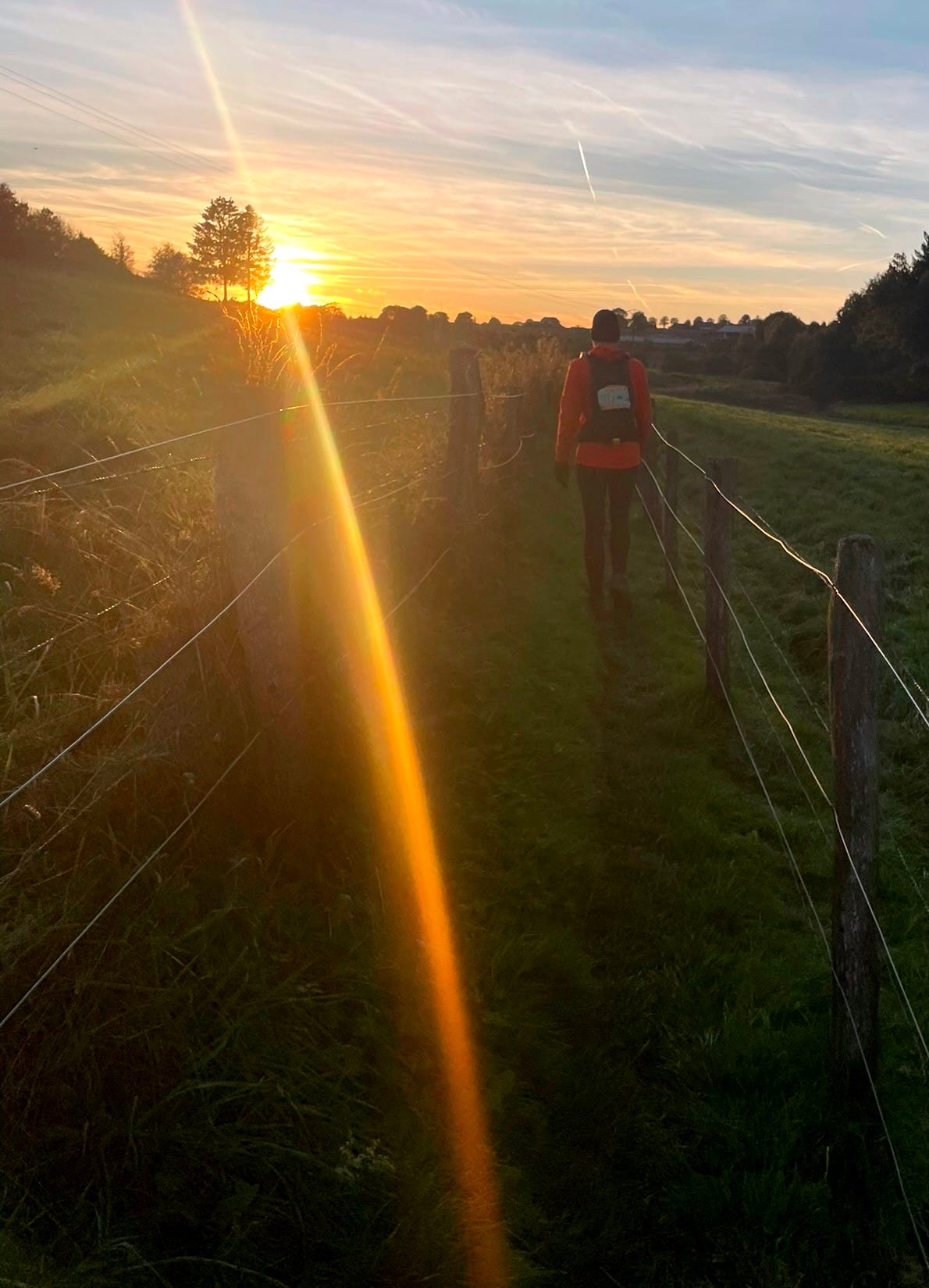
In the meantime, I forged a new trail alliance with Wilfried. We had communication difficulties as Wilfried did not really speak English, and my French and Dutch/Flemish is close to useless. Yet, we shared a similar pace and supported each other while navigating through the twilight and the first hours of the second night.
As Saturday came to an end, I realized I had been on the trail for around 28 hours with 20 more kilometres to the next dropbag. At this stage of the race, it is important not to focus on the finish line. I break the race down into 5 km increments. I see it as completing 32 separate 5 km races rather than one 160 km race. So, I have 4 more 5 km races to go until the next checkpoint.
Wilfried and I alternated the lead. Hiking behind someone saves a lot of mental energy. Following each other's steps and just checking from time to time the GPS that we are on the right track. There are also things we do not like to speak too much about when we are out there on the trails. We just smell them.
Farting is an inevitable part of spending 40+ hours on the trails.
For hikers and runners alike, going over those distances is a considerable challenge for the stomach. We basically run on carbs (sugar) while we are out there. A bit of fat is burned as well, but carbs keep us afloat. What we eat is different; it can be anything from professional sports and energy bars/gels to normal candies or sweets and chocolate paired with cola, water, and energy and isotonic drinks.
Exercise and movement place higher stress on the abdomen and stomach, and due to higher impact forces, farting is one consequence of it. Also, aerobic exercise makes food move faster through the digestive system and produces gases which need to get out somewhere.
The result is often a concert of farts, especially entertaining during nighttime when there are no other sounds and the farts echo through the dark forests. It is a welcome distraction to keep fatigue at bay.
Knee pain, flatulence, and self-talk aside, we were approaching the final major checkpoint. I was exhausted after covering 132km and started considering the idea of finishing. Being well ahead of the cut-off time, I decided to take a short nap. I planned to use a "Pool boy" aka "pull buoy", typically used in swimming to stabilize the legs and focus on arm drills. I planned to use it to support my face while I rested.
After receiving a croque monsieur from Hans and his team at the checkpoint, I inspected my dropbag and set up my sleeping arrangement. I placed my face in the pull buoy and set the alarm for 15 minutes. As I drifted off to sleep, I heard a click, which turned out to be someone taking a picture of me.
I turned around; my mouth was half open, and saliva was flowing over half of my face and the pull buoy on the table. This may sound disgusting, but it does not bother one at all after being 30 or more hours in a race. Everyone looks pretty jacked up after so many hours and we find harmony in embracing those moments. The guy, called Maarten, smiled at me and was super curious about my sleeping setup. So instead of being mad at him that he shortened my nap from 15 to only 7 minutes I explained him what a pull buoy is, for what it is intended to be used and how I use it. Maarten shared the picture afterwards with me, and this is what it looks like.
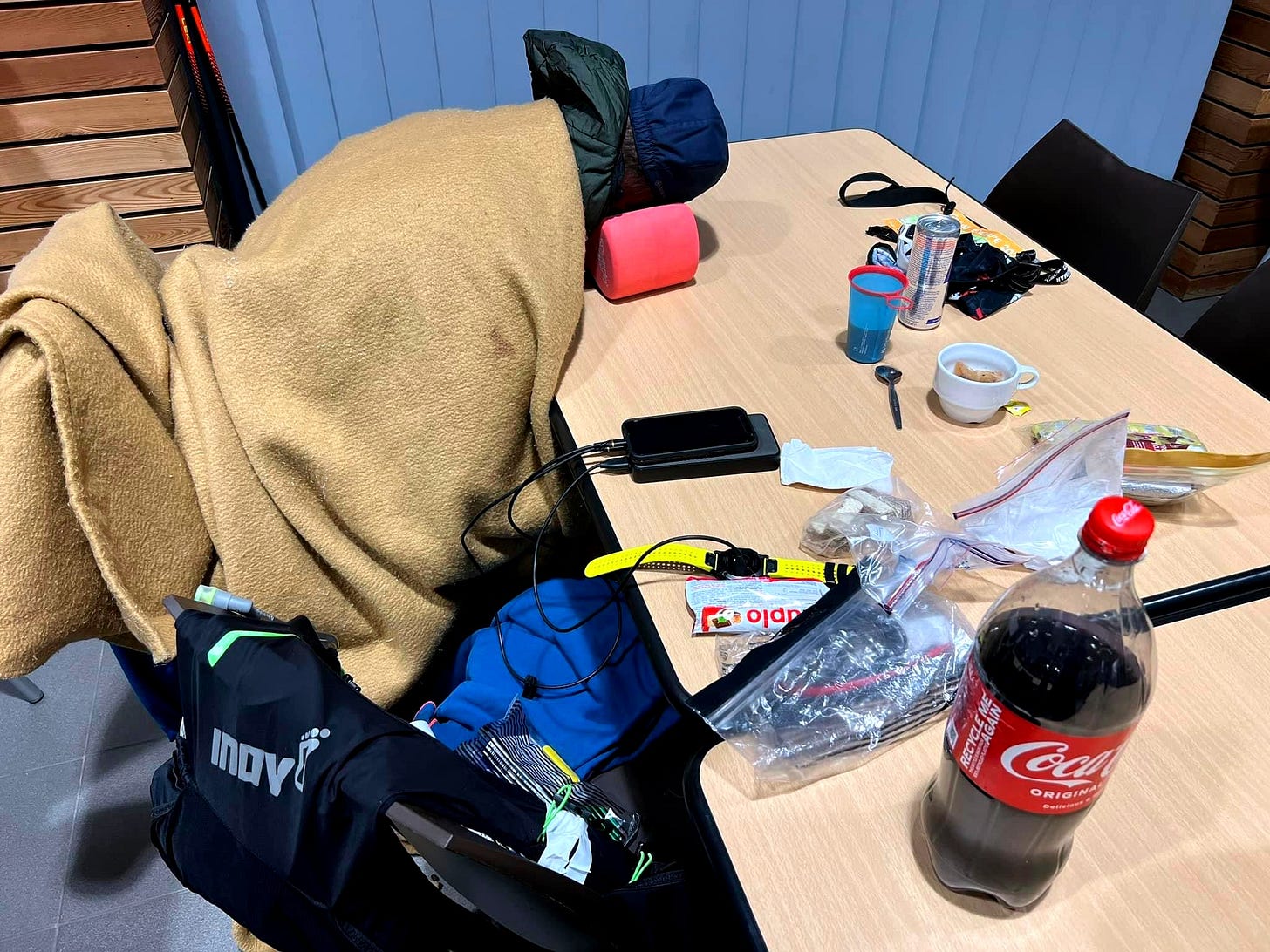
Although my nap was shortened to 7 minutes, I felt re-energized and ready to continue the race. However, my knee pain slowed me down, and I knew I had a long night ahead. The second night of the race was taking a toll on me. Before the race, I had already experienced a few nights of bad sleep. Trying to counter this, I slept in a hotel in the Ardennes on Thursday night. However, the thin walls and noisy neighbours (who seemed to have a romantic getaway) made it difficult to get a good night's sleep.
I anticipated that sleep deprivation would become a challenge at some point. I was around 34 hours into the race without sleep and, adding the whole Friday without napping, I was close to 50 sleepless hours.
When I signed up for the Great Escape, I told myself there was a high chance that I would experience hallucinations because of sleep deprivation and fatigue.
And here we were, the hallucinations kicked in. As I had never experienced hallucinations before, I could not tell when they started because hallucinations have one fascinating aspect: they become the new reality. Not in an over-the-top way, but in a very subtle way, the brain keeps adding new elements to the current reality, like putting a layer over the real reality.
It started with seeing supporters in the dark forests in the middle of the night cheering for the hikers and runners. Turned out they were just trees.
As I continued along the trail next to the Ourthe River in the Ardennes, I saw over 20 fly fishermen, but one after another turned out to be a tree. The frustrating part is that, at first, I believed what I saw was real. Then I realized it was a hallucination, but the fisherman remained in my new reality. I could close my eyes or shake my head, but it was still there. Only once I got close enough, like a couple of meters, my brain corrected the reality.
I did not consider those situations to be dangerous, even though they introduced new elements and layers to my reality. The hallucinations never implied the existence of a path where there wasn't one, leading me into an abyss or over a ridge. However, they did completely take over my imagination, infiltrate my brain, and create new images based on my fears.
At one point in the night, I was being chased by monsters who came out of the depths of the forests. The hallucinations peaked when I was sitting at the last small outdoor checkpoint 18km before the finish. It was an inhospitable place on top of a small but steep ascent, around 4 a.m., dark and cold.
Fatigued and sleepwalking, runners and hikers dropped in and refilled their water bottles. I sat on a small bench, being cared for by volunteers who understood the needs of athletes at that late stage of a race. This is because most of them are runners themselves.
🦖
I was sipping on an ice tea and chewing a cookie until the moment where I froze like an ice sculpture. There he was, across the street. Tucked away a bit between the trees but still clearly visible. The T-Rex. A fucking real T-Rex. I remained calm, not sure I would have had the energy to run away anyway and asked one of the volunteers whether I was the only one being a bit intimidated by the T-Rex across the street.
🦖
The volunteer replied empathically that she was not sure this was a T-Rex. I replied, “It is fine because I am pretty sure it is a T-Rex.” Remember, the hallucination makes those things real and makes them come alive. It does not matter whether dinosaurs are extinct or monsters do not exist. They become the new reality.
Which was super frustrating in that moment as I was trying to convince someone of something that was not there. When I realised it was a hallucination I apologised and followed her advice that it is best to keep going. Which I agreed to. And off I went into the last hours of the darkness and into day number 3, Sunday.
At this point, I was determined enough to know that if I did not get injured, I would finish the race. It was just a matter of enduring the next hours. I played with the thought of reaching another milestone in a process where I do not know the outcome nor the end goal, where the ultra-endurance journey eventually will take me.
I had 2 serious mental breakdowns in the last kilometres as I could not numb the knee pain anymore. Luckily I bumped into Jiske from the Netherlands who was doing the 80km hike and started somewhen on Saturday during the day. We had a good chat about hiking and climbing in my home country, Austria. I enjoyed tagging along a bit and forgetting the pain. When we climbed another of the steep hills, we sat down together for a moment to enjoy the views before embarking on the final stretch to the finish.
I parted ways with Jiske as I took some moments to unzip the “legs” of my trousers. I began to warm up seriously. The body temperature control is pretty messed up after being awake for 3 days and 2 nights and I had a hard time finding the balance between when to take off layers and when to put them on. In a mentally vulnerable moment, I met the guardian angel Alma again. Alma is part of the volunteer crew, travels along the trails with her GoPro camera, and gives mini pep talks to the athletes. Such a good soul and a welcome energy boost for the last kilometres. Here is the snippet of the video, which shows you how destroyed I am at this point in the race.
Just 2km before the finish, I needed to sit down again. I took a wrong turn and ended up adding a couple of meters to the final distance, which really broke my spirits for a moment. I might even still be sitting there today if it wasn't for this one guy who was running by and forced me to stand up. He told me there was no way I could sit down now. I was so grateful for the push. He was much faster as he was running uphill, but I saw him turning around a couple of times to make sure I kept going. Thanks, man!
Hallucinations kept coming towards the end, but I just integrated them into the process. Then, another runner overtook me and shouted, “Finish with a smile,” which made me smile a lot. And that is what I did; I finished with a smile.
On the last kilometre downhill towards Maboge, where the finish and race headquarters were located, I chatted with various supporters who were walking towards the athletes they were supporting. This was such a nice gesture, showing what a great community this is. I also stopped one more time, leaning on my hiking poles, trying to enjoy the moment.
The appeal of ultra distances for me is not just their length; it is the opportunity they provide and the space they create to pause and be fully present in the moment. While I may find myself lost in deep thought at times, most of the time I am simply hiking in the outdoors, soaking in the beauty of nature, one step at a time. I consider this a privilege and savour these moments before returning to the daily grind.
After crossing the finish line, I experience the usual mix of emotions. I guess it is because it is overwhelming for me to process everything at that moment. Also, receiving the finisher medal does not hold much personal significance for me; it rather serves as a nice souvenir and a reminder of the day. I often recall the finish line moment during tough times on the trail to motivate myself. It is one of the tools I use to combat my inner voice and doubts. But in reality, it is a very practical moment where I willingly let my body take over and shut off my mind. My body immediately demands what it needs: sleep, food, and a shower. And this is what I give him.
I returned to the car, grabbed my shower essentials, and enjoyed a hot shower. I value this so much more after a long day out on the trails than my usual daily shower. In fresh clothes and back to the car, I dipped my feet in the ice-cold river to help them recover. This was followed by a two-hour nap in the car before having some food and heading back to Brussels for the obligatory four-cheese pizza. It became a ritual after such adventures.
On my way home, I checked the tracker and discovered that Klaas had also finished. Congratulations, buddy!
After all, the body recovers on its own. Since I wore my insoles again at home, my knee stopped causing issues. What requires more attention is my mental fatigue and recovery.
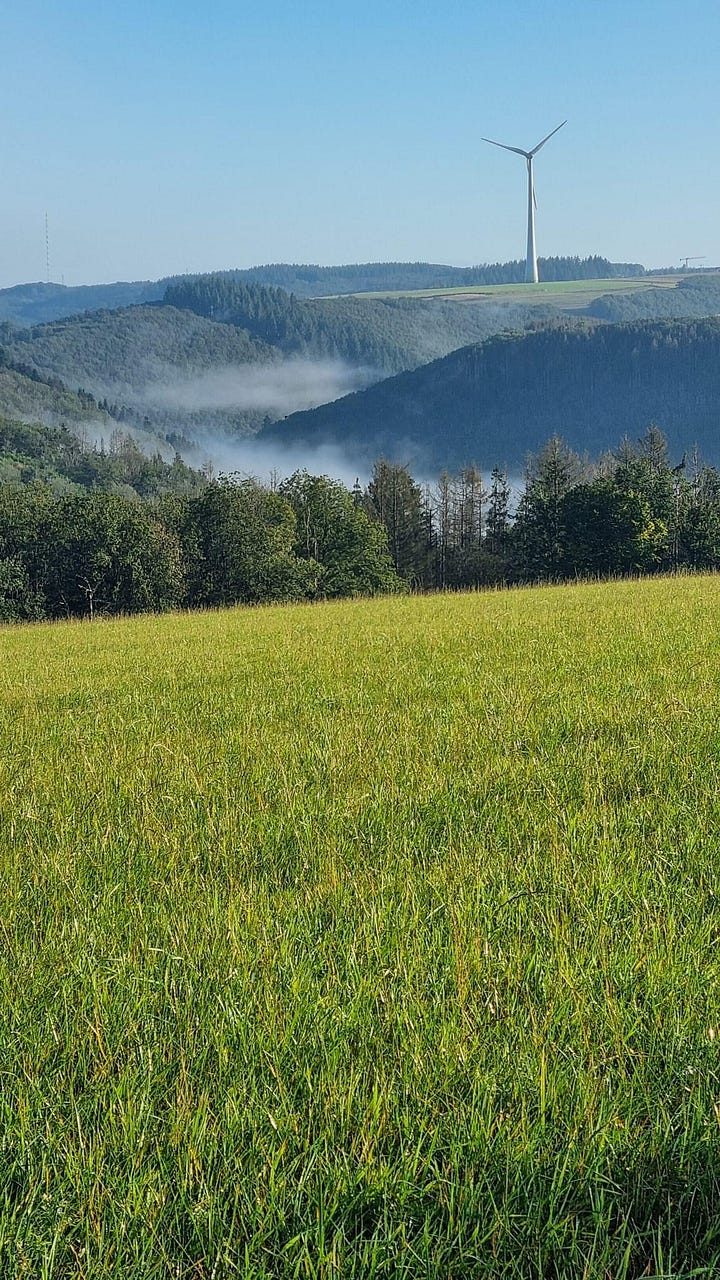
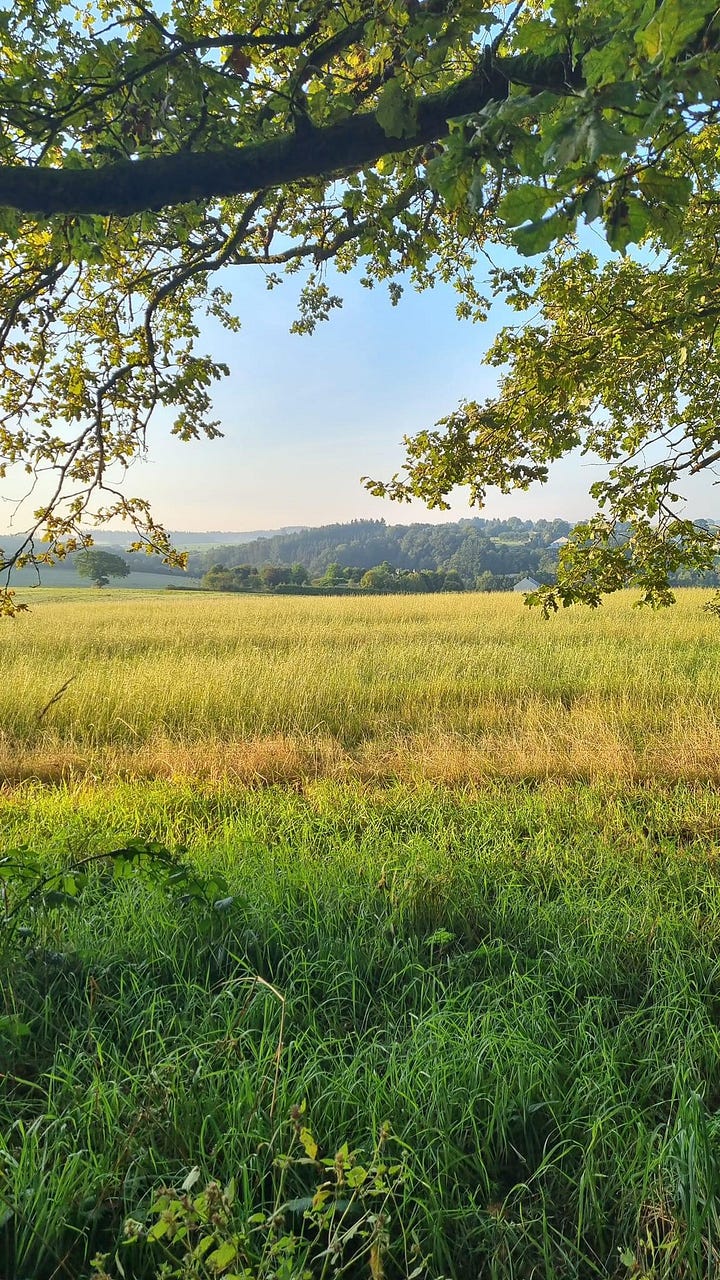
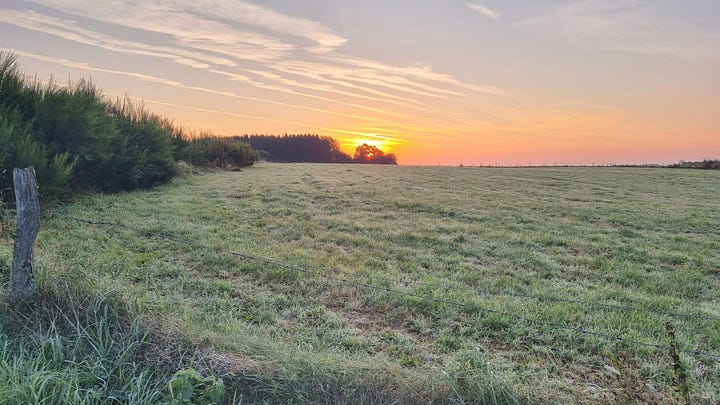
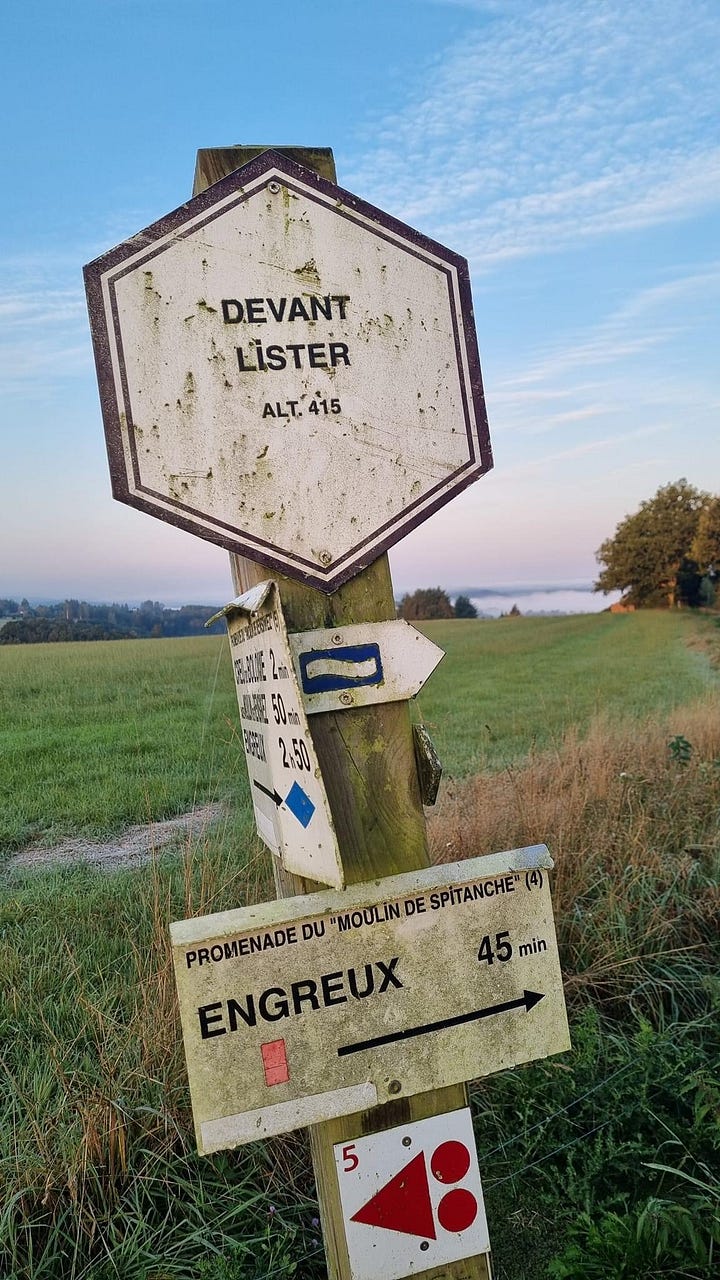
After pushing myself to the limit for 40 hours, I often feel mentally unbalanced in the days following such an intense endurance challenge. To regain stability, I write down my experiences, like I am doing in this article.
Ironically, I also find comfort in going for more hikes, especially alone at night, to process my thoughts and experiences. Writing helps me consolidate everything and preserve it as the adventure it was in my internal memory bank and what I call my personal life museum.
Some friends have asked me, "When or where will you stop?" I do not have an answer to that. However, I do believe that endings, just like beginnings, happen naturally.

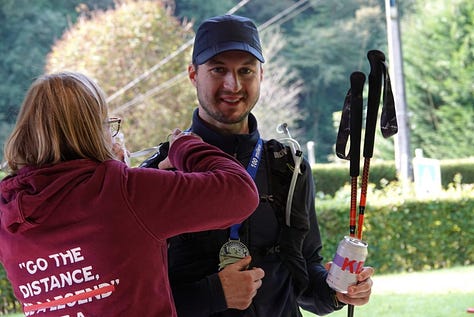
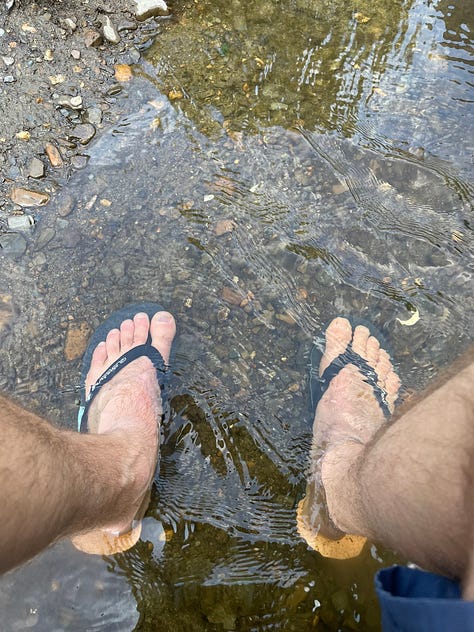
Using The Lion King's metaphor, it is like the circle of life. I will not intentionally stop exploring what is possible, but I will listen to my inner voice, which will certainly let me know when it is time.
That is still a long way off and many farts away.
Question for you:
What is something you started some time ago without knowing what the outcome will be in the future?
I appreciate all of you who have supported me or shown interest in my adventures until now.
Thank you for reading and don’t forget to stay awesome!

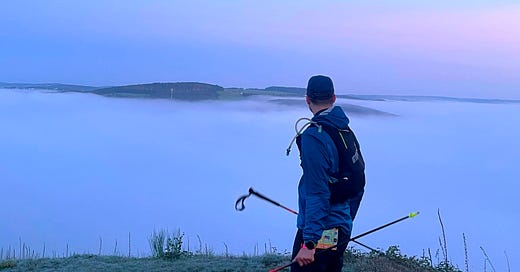


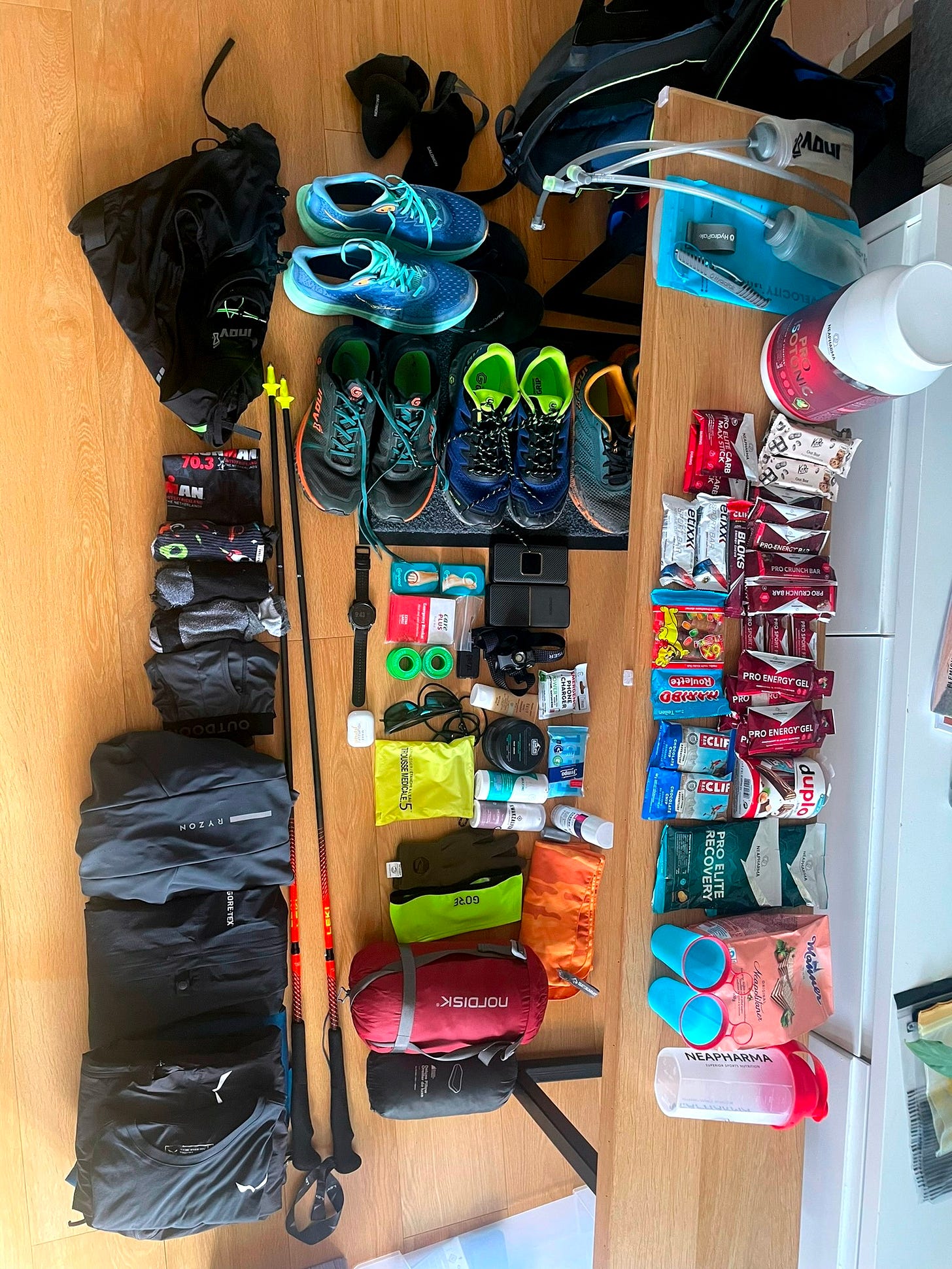

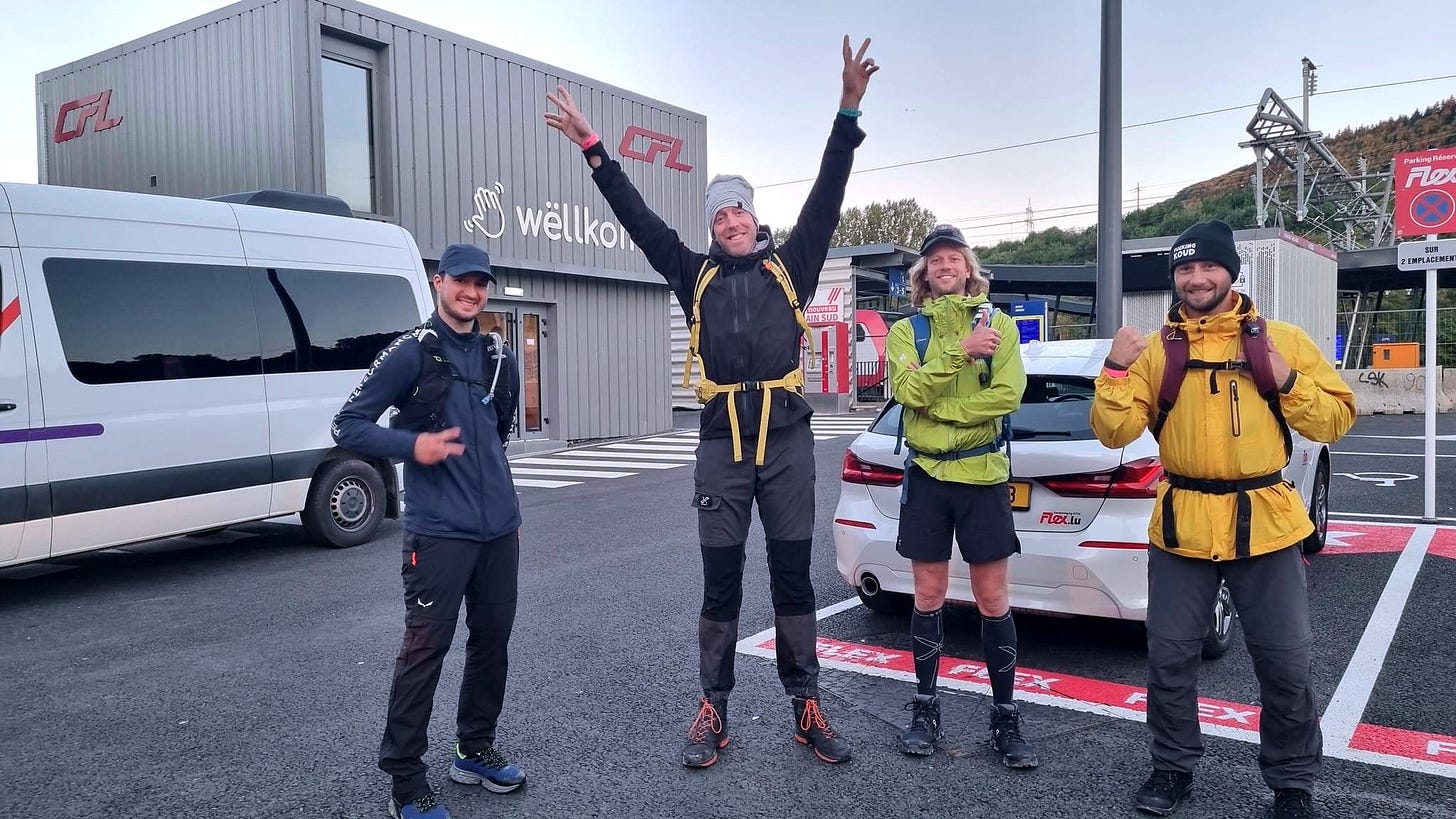
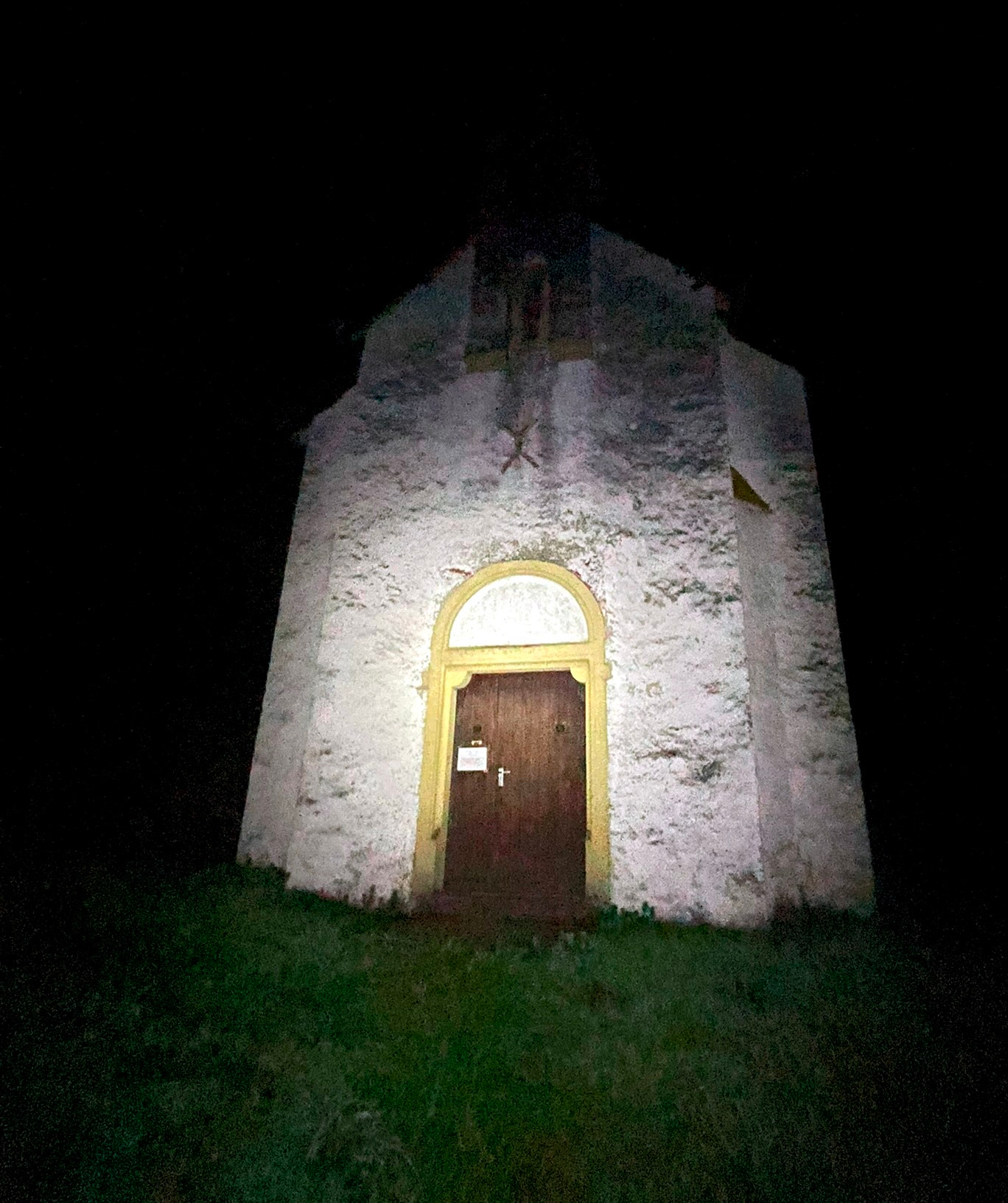
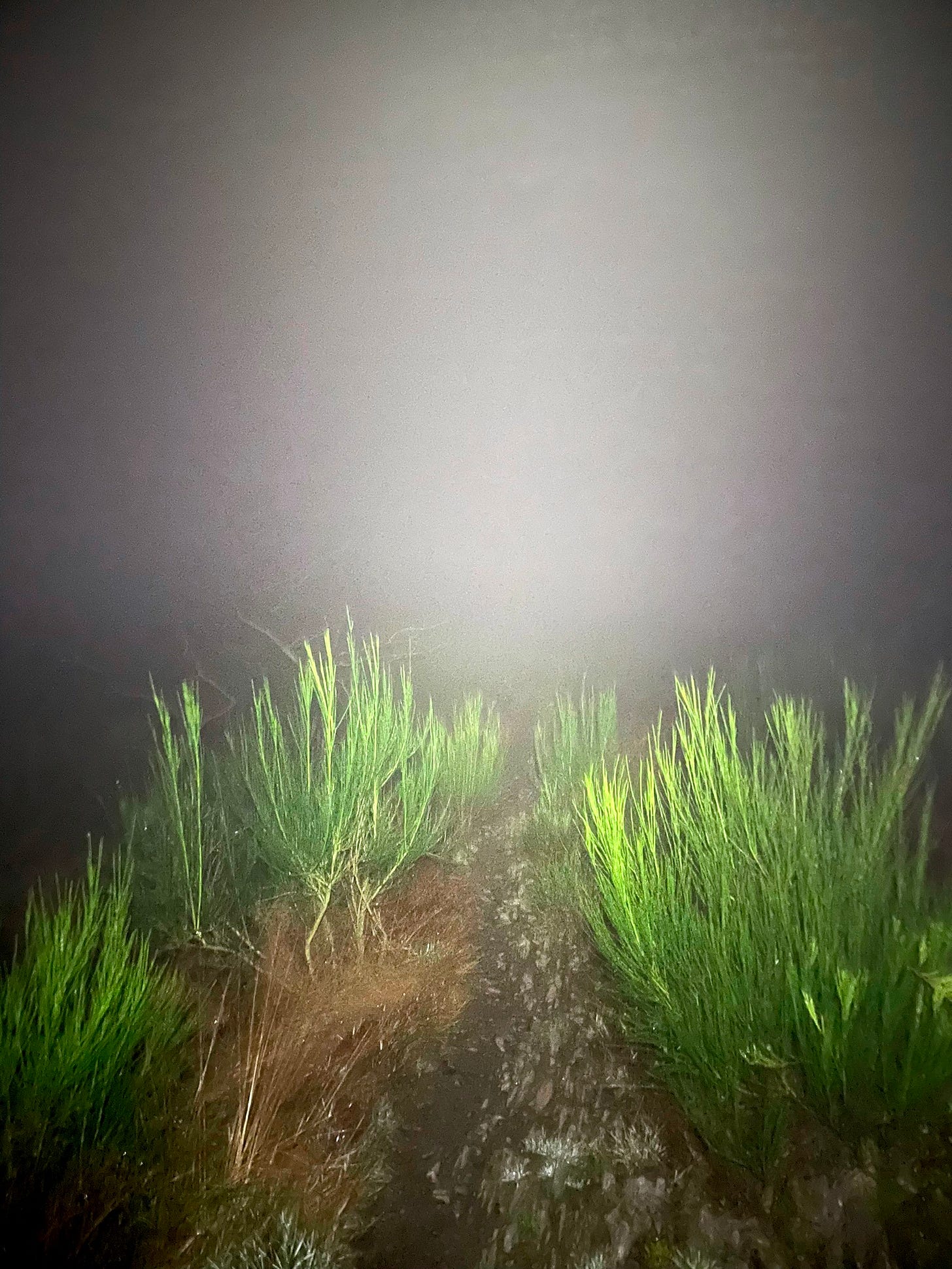

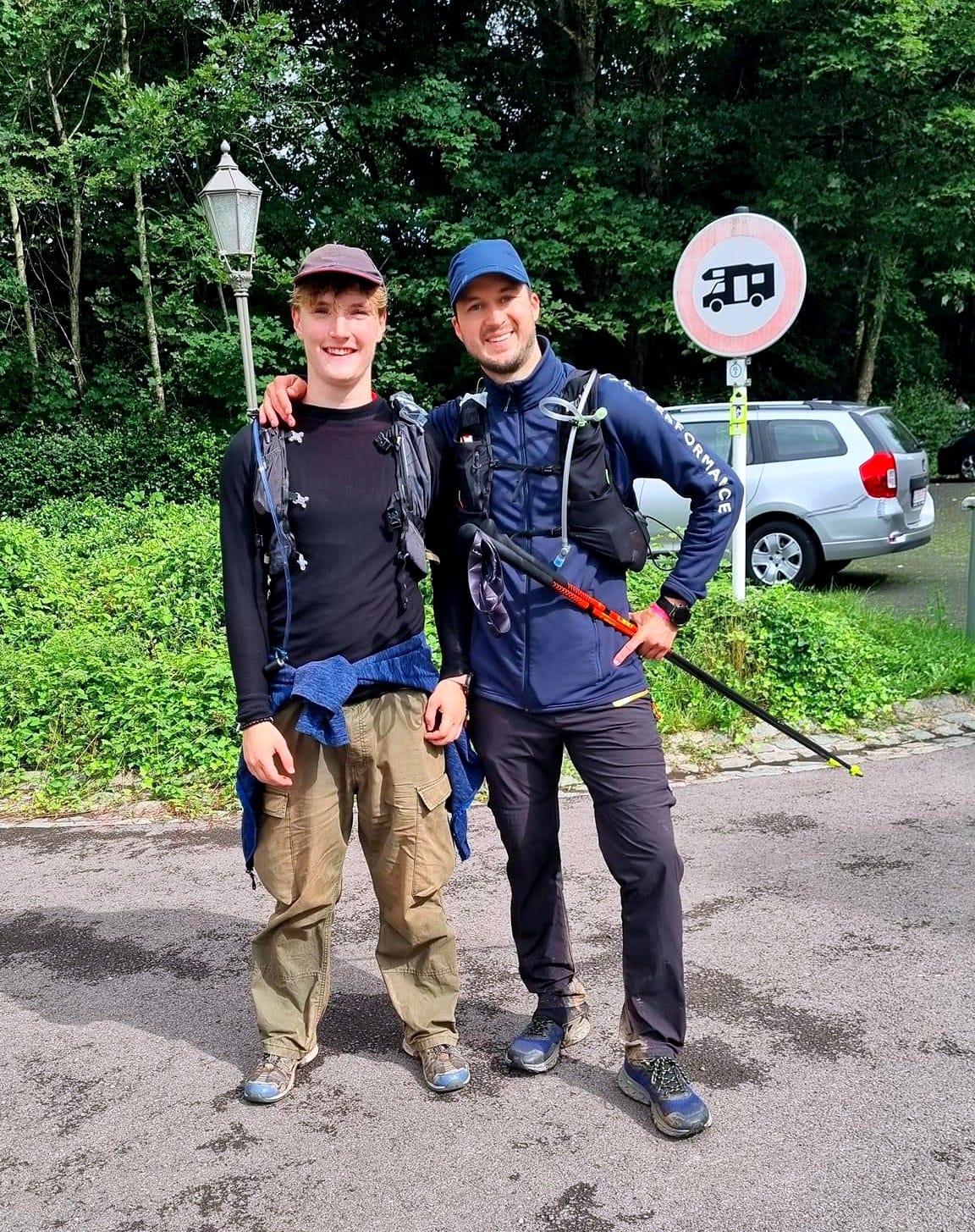
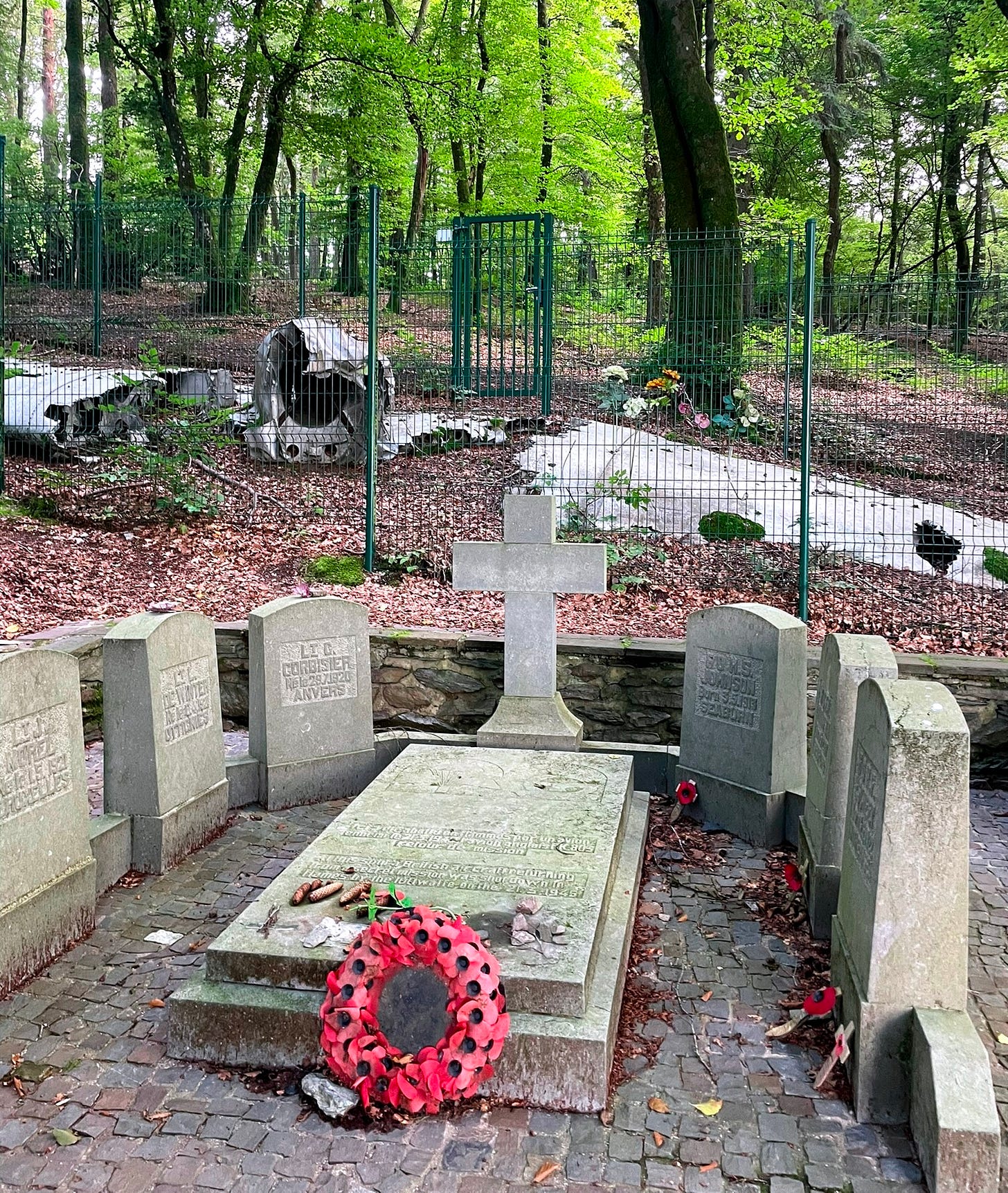

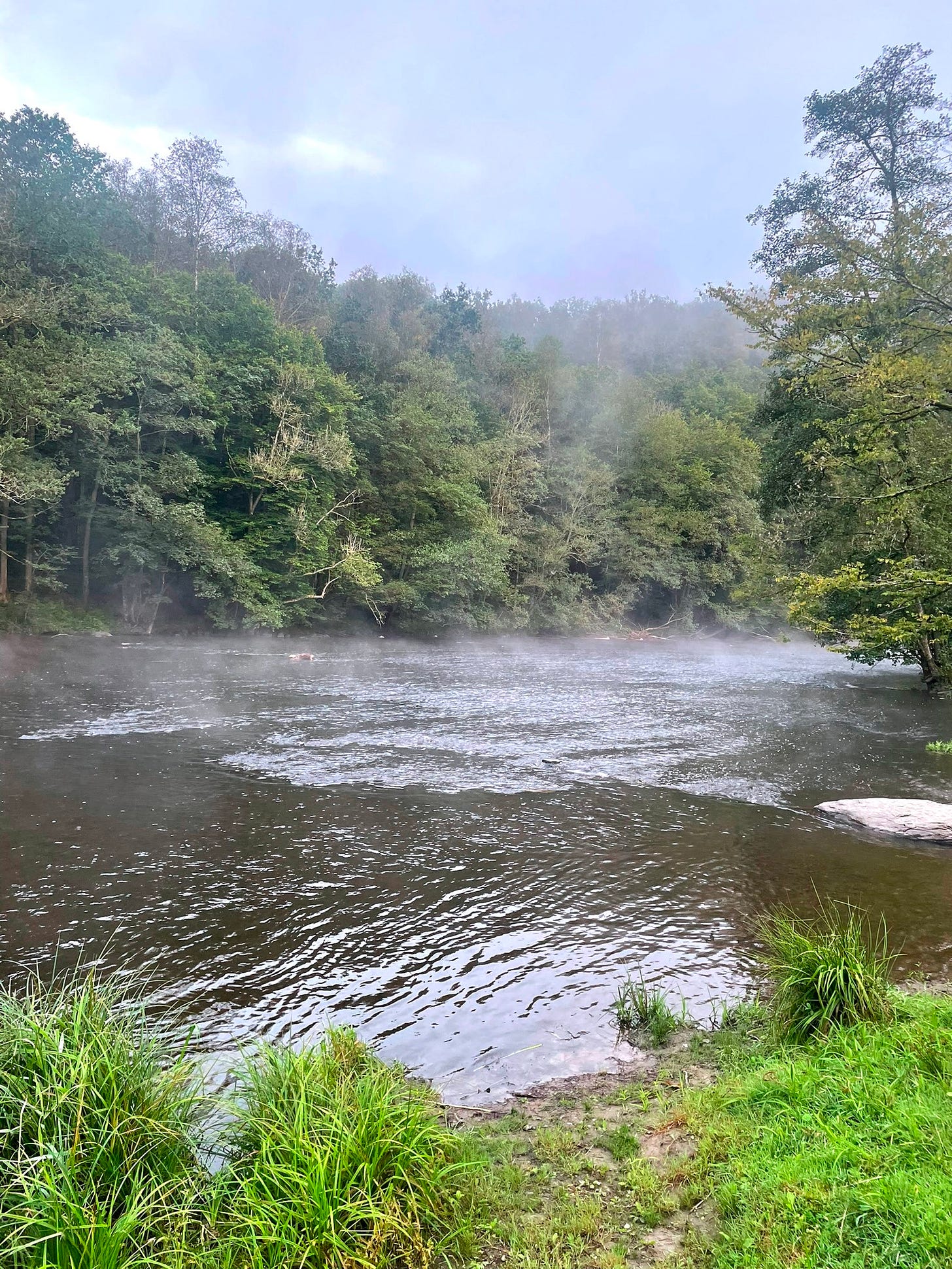

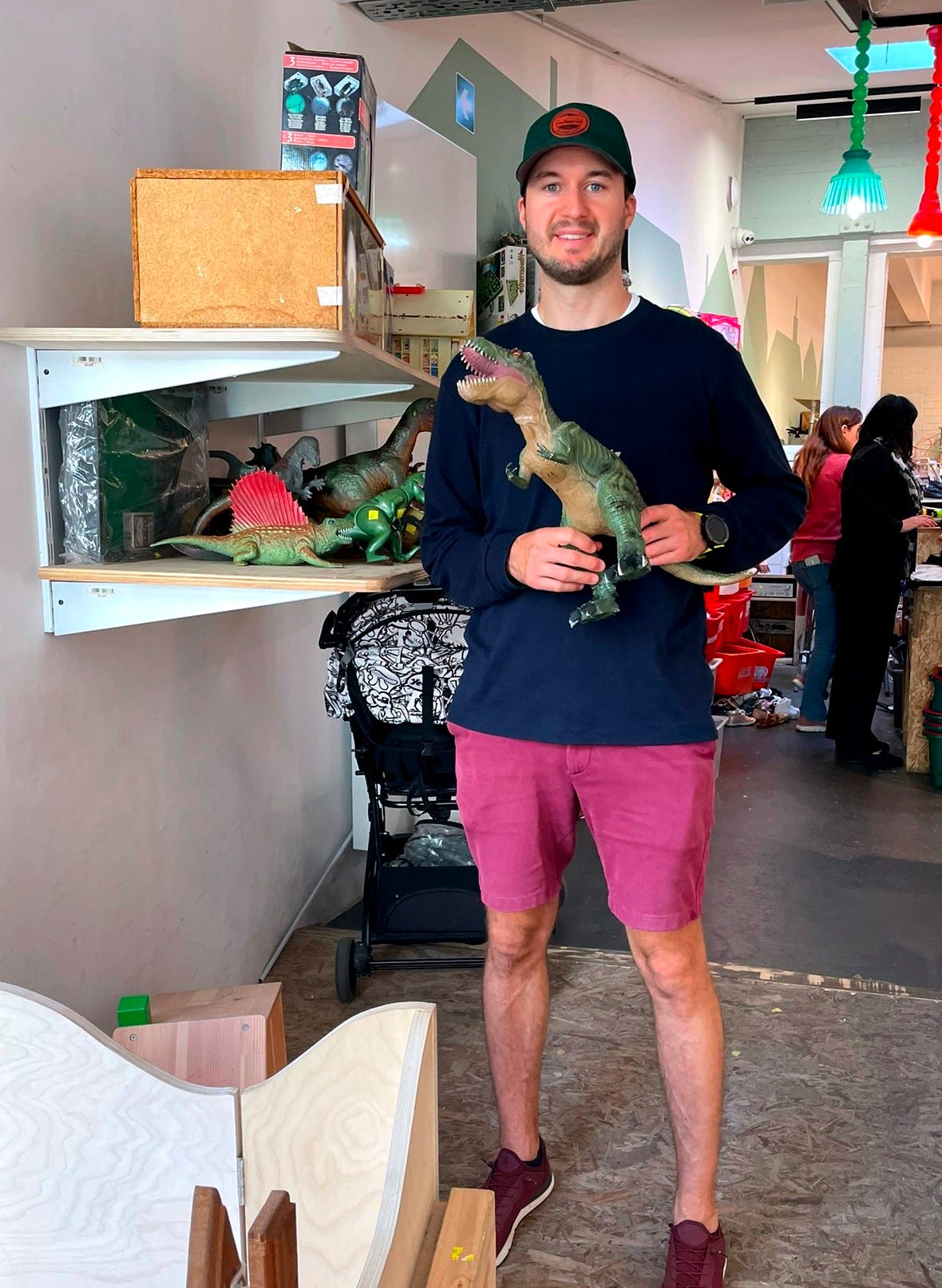
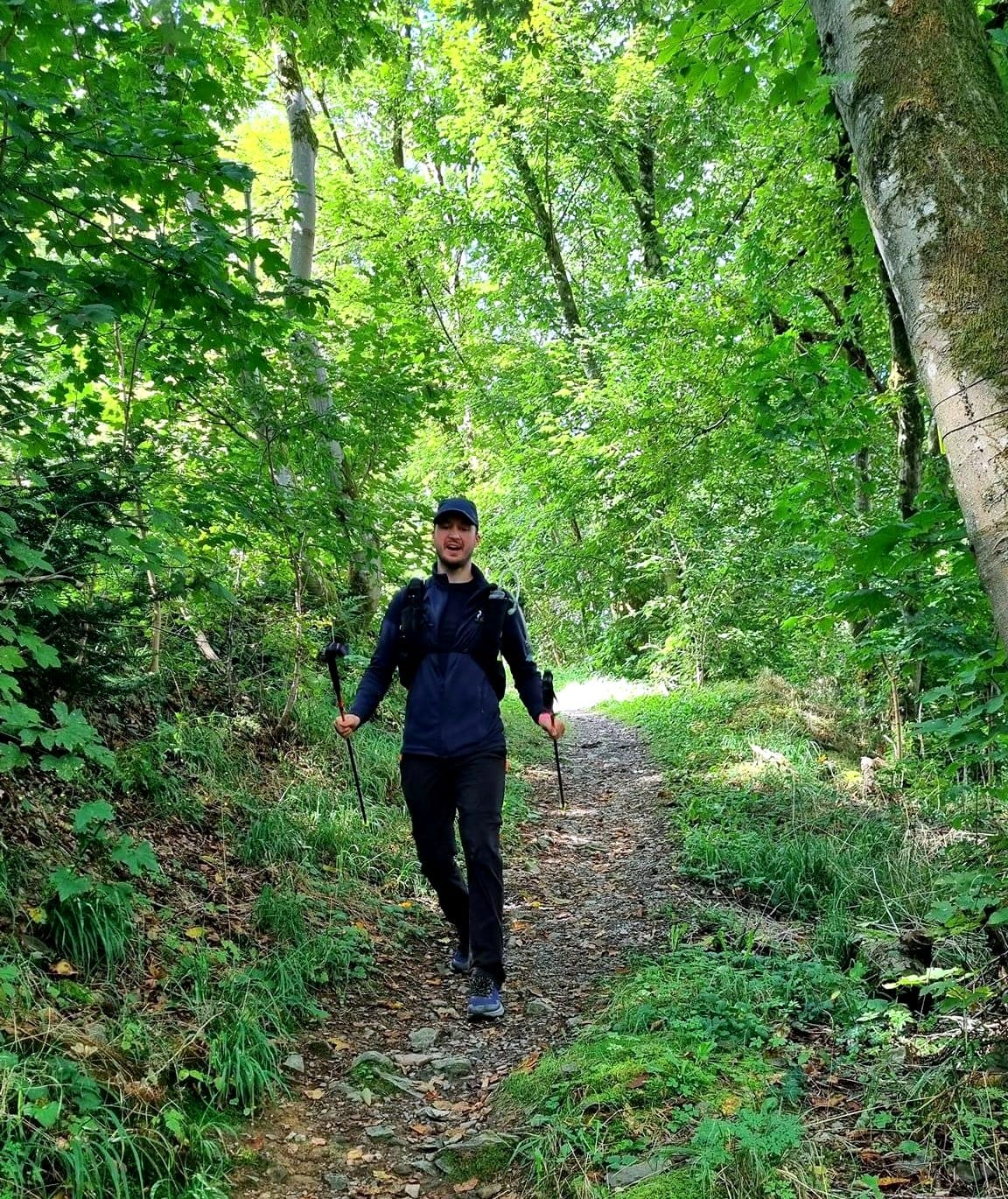
This is so inspiring - and real. Thank you for sharing this with us, Clemens! Wow.
At first I thought « why is he doing this to himself » .. but when I finished the reading I was blowned away by your eagerness to push yourself out of your comfort zone and your humility in front of of what nature, your body and your mind offer you in return! So well done Clemens & so proud of you